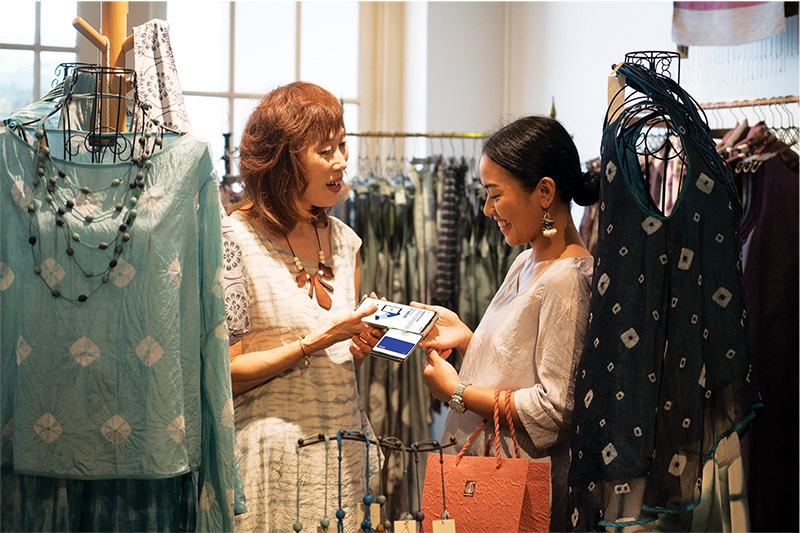Vietnam witnessing speedy growth in digital payments
 |
| Visa’s latest survey shows just how much payment tech is evolving |
Digital payment giant Visa published its latest Visa Consumer Payment Attitudes study last month, which showed an emphatic shift in payment habits. Sixty-five per cent of Vietnamese are carrying less cash in their wallets and 32 per cent said they would stop using cash after the pandemic. This was paralleled by significant gains in cashless payments. Almost 76 per cent of consumers now use mobile wallets and even more (82 per cent) use cards.
“The impacts of the pandemic cannot be ignored – neither in the short term nor the long term. It has resulted in lasting changes in the ways consumers are choosing to make purchases and in how they pay. Success for merchants and businesses rests on their ability to evolve and transform with these changes,” said Dang Tuyet Dung, Visa country manager for Vietnam and Laos.
Online shopping and cash alternatives are all likely to stay after the pandemic. Two-thirds of Vietnamese tried shopping online during the pandemic and half of them made their first purchase through social media. Nine out of 10 consumers are now using home delivery, and almost all of them use it more often than before the pandemic.
Spending on all forms of travel decreased as people cancelled or postponed trips, along with eating out and out of home entertainment. Now, consumers are most eager to spend on travel, especially domestically (25 per cent). The surge of desire in Vietnamese consumers to travel is driven by reconnection, over necessity or wanderlust exploration, as consumers yearn to reunite with family and friends after a long time apart.
The overwhelming majority (more than 80 per cent) now use their cards, QR payments, and mobile wallets at least once a week. Meanwhile, a solid half of all Vietnamese have begun using cards more often, while 64 per cent and 63 per cent have increased their usage of mobile contactless and mobile wallet payments. Convenience seems to be the highest-rated factor in consumer preference across digital payment methods, followed by safety from infection and transaction security.
“As innovation is driving us to build the future of money movement, Visa is proud to be leading the payment trends in Vietnam through innovative products and services, enhanced technology and unparalleled security. We hope the insights of our latest study will empower our local partners in creating digital-first strategies to succeed in these fast-changing times,” Dung added.
As of the end of 2021, 95 per cent of all financial institutions in Vietnam had been developing their own digitalisation strategy. Currently, over 80 banks have offered customers e-banking services; 44 banks have offered mobile banking services; and 45 fintech firms offer payment intermediary services. Across the country, there are currently over 90,000 stores that accept QR code payments and nearly 300,000 point-of-sale terminals.
In the near future, Vietnam’s objectives are to continue to support banking and payment technologies, connect isolated and rural parts of the country with banking systems, provide small-amount transactions electronically nationwide, provide 24/7 automatic financial services, and update electronic payment security features.
Visa is promoting its long-standing goal of supporting Vietnam to become a cashless nation by advancing payment infrastructures and innovation while empowering society through driving digital growth.
To help drive the increased use of digital payments, Visa has extended its lineup of merchant partners for Cashless Day held annually on June 16, bringing significant discounts and benefits for Visa cardholders, including one-time discounts on the Grab app.
The latest edition of the Visa Consumer Payment Attitudes study was conducted from August to September 2021 and involved 6,520 consumers aged 18-65 in Singapore, Malaysia, Thailand, Indonesia, the Philippines, Vietnam, and Cambodia.
What the stars mean:
★ Poor ★ ★ Promising ★★★ Good ★★★★ Very good ★★★★★ Exceptional
Related Contents
Latest News
More News
- Home Credit Vietnam brings financial literacy closer to women and students (November 20, 2025 | 11:25)
- MB partners with Visa, KOTRA to launch new MB Visa Hi BIZ card (November 20, 2025 | 11:24)
- VPBank upgrades core banking with Temenos and Systems Limited (November 14, 2025 | 17:54)
- CPO Home Credit shares how to build an AI-driven but human-centric workplace (October 30, 2025 | 09:56)
- VIB hits $267.4 million in pre-tax profit over first nine months (October 29, 2025 | 12:12)
- UOB Vietnam elevates retail banking experience with enhanced credit card suite (October 24, 2025 | 09:50)
- PVcomBank offers 20 per cent cashback on VNPAY-QR payments (October 20, 2025 | 17:43)
- Vietnam’s banking sector enters data-driven era (September 30, 2025 | 16:33)
- Ant International becomes first foreign partner of China’s CPG (September 22, 2025 | 17:58)
- VIB unveils Smart Duo to maximise savings and spending returns (September 22, 2025 | 11:22)

 Tag:
Tag:



















 Mobile Version
Mobile Version